When you first bought a shiny new fiberglass RV you were probably the talk of your neighborhood.
And your neighbors probably kept loving you until your Fiberglass RV started to oxidize and lose its shine — which is something that’ll inevitably happen over the years, especially if you don’t properly care for your fiberglass RV.
So, how do you remove oxidation from RV fiberglass?
Depending on the level of oxidation, here are the three different ways remove the chalky effect of oxidation on fiberglass gel coat to restore your RV’s color and shine:
-
Mild oxidation requires hand buffing with a microfiber rag and polish.
-
Medium levels of oxidation require an electric buffer to restore your RV’s finish.
-
Extreme levels of oxidation will require you to carefully wet sand your RV to remove the oxidation.
While it is fairly easy to remove oxidation from RV fiberglass, we’ve got you covered if you need a little more explanation for each step.
Besides explaining the steps, this post will also show you the tools you need to do the job and ways to prevent oxidation that we’re sure you’ll find super helpful.
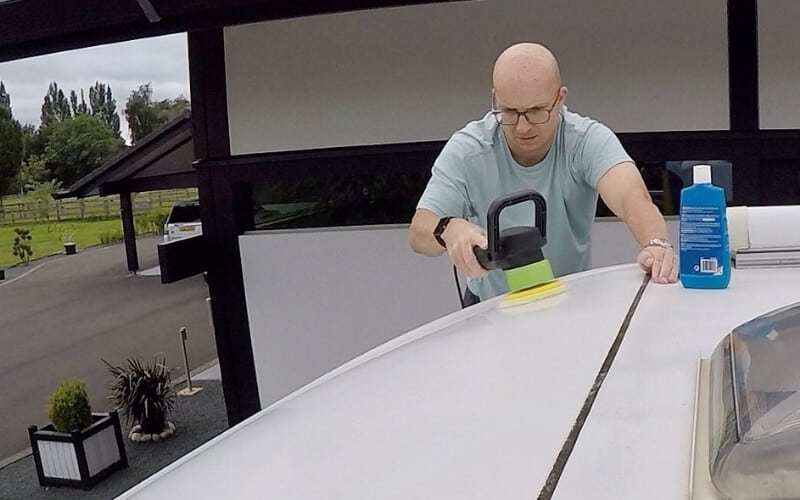
Why Does Fiberglass Oxidation Happen?
Oxidation is literally what happens to things when they’re exposed to oxygen for long periods of time.
For example, when fruit sits out for too long and gets brown, that’s oxidation.
Rust is another example of oxidation.
When it comes to fiberglass RVs, oxidation happens when the gel coating over your RV fiberglass starts to wear off, causing the raw fiberglass to be exposed to the elements.
All manufacturers of fiberglass RVs finish the job by putting a gel layer over the top of the fiberglass. That’s what made your fiberglass RV shiny when you first bought it.
But, no matter what you do, that gel layer will eventually wear off — even if you take great care of your fiberglass RV.
When that gel layer wears off, your fiberglass RV will start to oxidize. Fiberglass RVs will be at increased risk of oxidation when they are overly exposed to weather, the elements, and — especially — sunlight.
And that means you’ll need to think about ways to remove the oxidation from RV fiberglass.
How To Spot Oxidation On Your Fiberglass RV
Oxidation on your fiberglass RV will be relatively easy to spot because your RV will start to lose its sparkle.
If you start to see your RV looking cloudy, chalky, or — worse still — yellowed, that is oxidation.
You can slow the process of your fiberglass RV from getting oxidized through regular washing and waxing, but oxidation inevitably will happen to a fiberglass RV, especially if it’s left uncovered for long periods of time.
Once you spot oxidation starting on your fiberglass RV, you should start thinking about how to remove it because the longer you wait, the harder it’ll be to remove.
Different Types Of Fiberglass RVs
There are two main types of fiberglass RVs:
-
Fiberglass gel — The vast majority of fiberglass RVs fall into this category. This simply means that the RV’s outer skin is fiberglass with a gel coating over it. Once that gel coating wears off, that’s when you’ll start to see oxidation.
-
Fully painted fiberglass — This is usually found on ultra-lux rigs where the body is fiberglass and then covered with a two stage paint job of paint and clear coat. These rigs will generally not oxidize badly as long as you continually wash and wax them.If you have an older rig like this where the clear coat is wearing off, it’s best to seek out professional help for restoring it because it can be difficult to DIY.
Tools Needed To Remove Oxidation From RV Fiberglass
You’ll need different tools depending on the level of oxidation on your RV. Here’s the list of tools you may need:
- Microfiber rags — These are used for hand buffing and polishing your fiberglass RV.
- Car Soap — To thoroughly clean your RV before use.
- Fiberglass polish — Used to actually remove the oxidation from RV fiberglass.
- Power buffer (optional) — Heavier levels of oxidation might require a bigger tool like this.
- 2,500 grit sandpaper (only for extreme cases of oxidation) — For wet sanding only if you’ve exhausted all other options, read the instructions below for wet sanding, and have consulted a professional.
1: Hand Buffer To Restore Your RV Gel Coat Shine
When you want to remove light oxidation from RV fiberglass, hand buffing is the way to go. To do this, follow these steps:
- Grab a microfiber rag and a fiberglass polish — Apply a generous amount of polish to the rag and then rub the polish onto every part of your RV with a light, circular motion. As you polish your RV this way, you’ll see the oxidation starting to clear away.
- Continue polishing with a circular motion — Polish all over your RV, adding polish to the rag as you go, and using new rags when you need.
- Polish your whole RV this way — Remove oxidation from RV fiberglass as you go.
Remove Fiberglass Oxidation From Your RV By Power Buffing
When facing a medium level of oxidation on a fiberglass RV, you may need to get a power buffer like this one.
A power buffer will save you tons of time and will help you get at the tougher levels of oxidation that can hit some fiberglass RVs.
Be sure to use a soft buffer brush so you don’t damage your fiberglass RV. Once you have a soft brush on your electric buffer, you can simply apply an RV polish to the buffer brush to buff your entire RV.
By power buffing, you’ll be able to dig in more deeply to the level of oxidation on your fiberglass RV.
What If My Fiberglass RV Is Extremely Oxidized?
If your fiberglass RV has gone neglected for a while and you’ve got heavy duty oxidation all over it, the above two methods might not work for you.
In this case, it’ll be time to bust out the big guns. By this we mean you will have to resort to wet sanding your fiberglass RV to remove the oxidation.
NOTE: Wet sanding should only be considered a last resort after you’ve tried the two methods above.
If both hand and power buffing don’t work then and only then can you even consider wet sanding.
We also recommend chatting with a pro before you do it because it’s easy to damage your RV if you’re not careful with wet sanding.
If you decide to wet sand your fiberglass RV to remove oxidation, these are the step you’ll want to follow:
-
Prep the sandpaper — It is vital that you use sandpaper of around 2,500 grit for light oxidation and 1,200-1,500 only for heavier oxidation.You also must put it in a bucket of water with a bit of automotive soap and let it sit for 24 hours. That process softens the sandpaper to help prevent it from damaging your RV.
-
Thoroughly wash your RV — Use normal automotive soap to give your fiberglass RV a good bath. Clean it all over and don’t worry too much about letting your rig dry after — the moisture will actually help you with wet sanding.
-
Wet sand the fiberglass with gentle pressure — Generally speaking, you want to hand sand your RV rather than use a power sander. The most important part otherwise will be to apply gentle, even, and consistent pressure while sanding your fiberglass RV. If you find that your wet sander isn’t completely removing the oxidation from the fiberglass, you can add more pressure, but just remember to move carefully.
Wet sanding can be a difficult process to complete, but it is possible to DIY, especially if you consult an RV professional before you do it.
How To Prevent Your Fiberglass RV From Oxidation
Now that you’ve removed oxidation from RV fiberglass, it’s a good idea to take steps to prevent it from happening again. To do that, stick with the following steps:
-
Wash your RV monthly — By doing this, you’ll prevent oxidation from building up too heavily.
-
Wax annually — Snag some marine or RV grade wax and apply it all over your fiberglass RV once per year. The wax will protect your rig from exposure to oxygen, therefore limiting the oxidation.
Oxidation is unfortunately a part of life for fiberglass RVs — especially those rigs that have been left to sit out in the sun without proper care.
Fortunately, removing oxidation from RV fiberglass can be a DIY’able task as long as you’re careful to take the steps needed to safely remove the oxidation and prevent it from coming back.


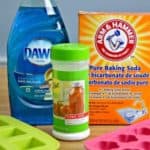

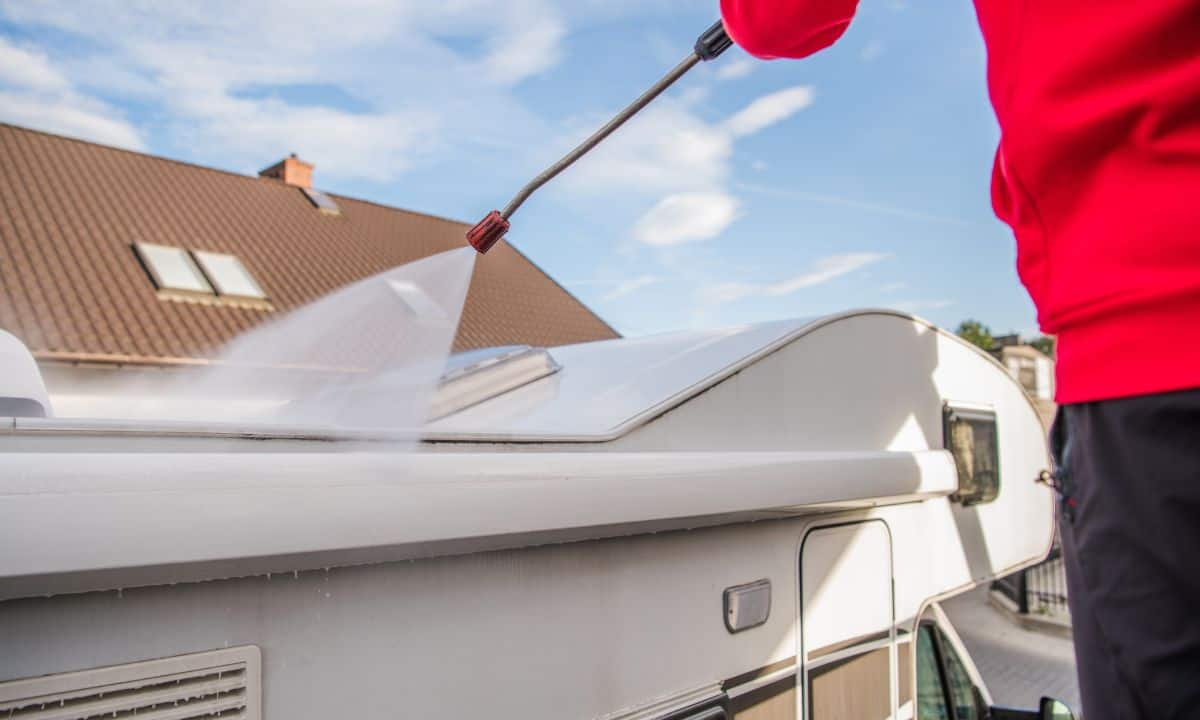
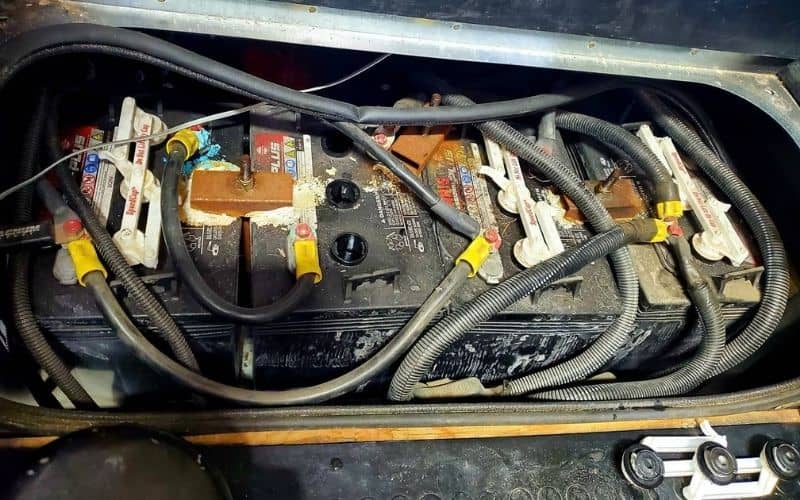
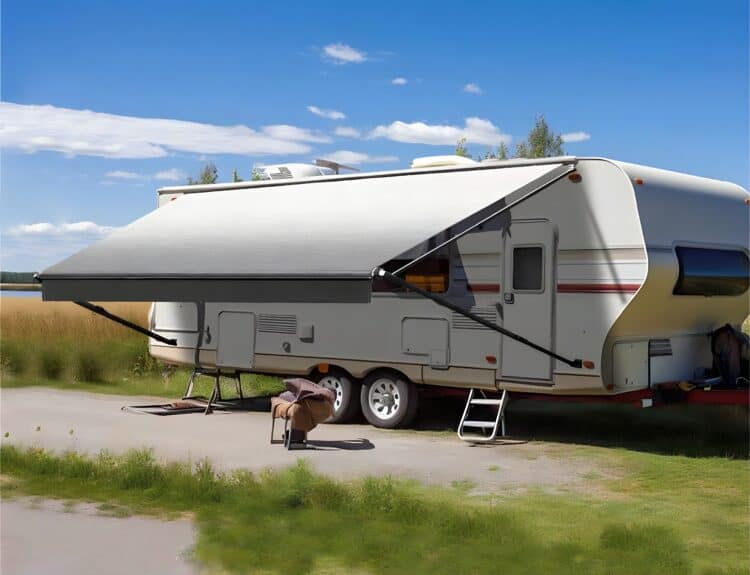
2 Comments
Dalton Bourne
2 years agoIf you are worried about oxidizing in your RV like me, I will share with you how to remove oxidation from RV fiberglass. I recommend parking your motorcycle in a shaded area. Putting it in direct sunlight dries the polish and wax quickly, making it difficult to polish. Then wash it with a warm soapy solution. Apply a buffering compound to the fiberglass of your motorhome using an applicator. Spread the polish on a 2.5cm-sized portion and start polishing the backing. Take the yellow sponge and apply the polishing compound. Use the orbital polisher to spread the polish in small 22 inch square sections, combining up and down with right and left movements. Finally, waxing is an essential step for the complete restoration of RV fiberglass.
Dalton Bourne
2 years agoWaxing is an essential step to comprehensive RV fiberglass restoration. I recommend using liquid carnauba wax because the shine it produces is a lot better than synthetics. The only issue is that the effects do not last that long.